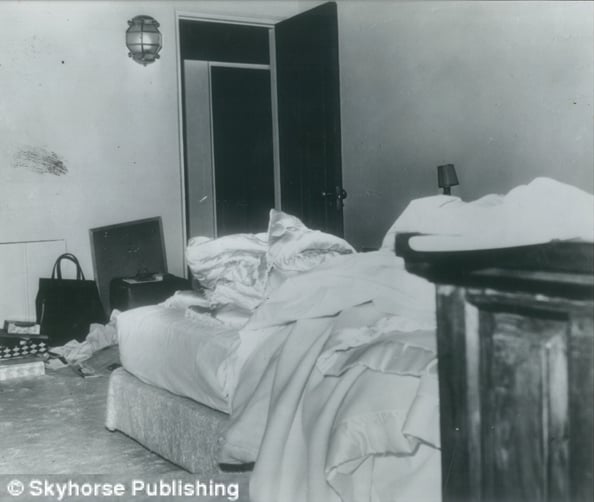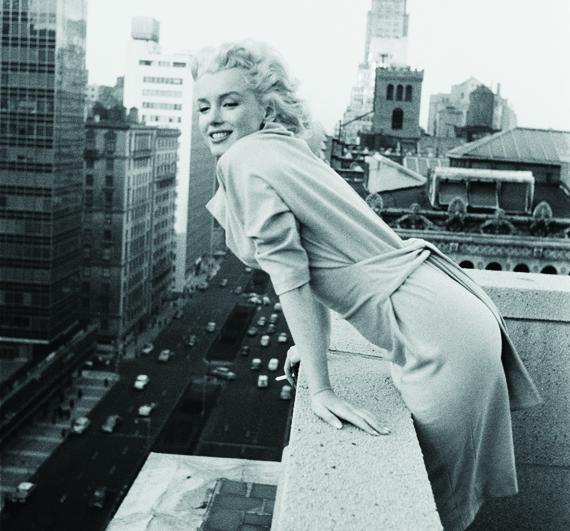Bobby Kennedy, a gangster squad and the greatest cover up of all time. Could this be the real story behind the death of the legend that was Marilyn Monroe?
It’s the celebrity death to rival all celebrity deaths; the ultimate unsolved mystery surrounding the ultimate silver screen icon, Marilyn Monroe, whose sudden passing during the late evening of Saturday, August 4, 1962, has sparked countless TV documentaries, magazine articles, and books asserting the troubled star accidentally overdosed on prescription drugs, committed suicide or was murdered.
Those insisting Monroe was a victim of crime have concocted numerous theories. Yet despite the forcefulness of their allegations, none has been conclusive. In their explosive new book, The Murder Of Marilyn Monroe: Case Closed, investigative reporter Jay Margolis and New York Times bestselling author Richard Buskin – both Monroe experts – provide compelling evidence that the blonde bombshell was, in fact, murdered by her psychiatrist, who allegedly administered a fatal injection of pentobarbital to her heart at the behest of US Attorney General, Robert (aka Bobby) Kennedy, and his brother-in-law, actor Peter Lawford.
Having conducted affairs with, and been unceremoniously dumped by, both Bobby Kennedy and his elder sibling, President John F Kennedy, Monroe was, according to Lawford, infuriated by them “passing her around like a football” and threatened to spill the beans on the leading lights of America’s first family, as recorded in her little red diary. So, accompanied by Lawford, Kennedy paid Monroe an afternoon visit at her home in Los Angeles’ exclusive Brentwood neighbourhood and demanded to know where the diary was.
When Monroe refused, an argument ensued, turning violent after Bobby made it clear that their relationship was over and stated he didn’t want her to contact him again at the White House. Screaming that she’d go public with her revelations during a press conference scheduled for the following Monday, Monroe lunged at her former lover with a small knife, prompting Lawford to knock it out of her hand before Kennedy threw her to the floor. At that point, one of Kennedy’s bodyguards tried to calm Monroe down by injecting her in the armpit with Nembutal. This enabled Lawford and Kennedy to search for the diary, but the sedative quickly wore off. However, Kennedy wasn’t giving up.
Later that night, Kennedy returned with his two bodyguards – both members of the LAPD’s notoriously corrupt ‘Gangster Squad’ – who restrained Monroe, stripped off her clothes and gave her a drug-cocktail enema after further Nembutal injections didn’t effectively subdue her.
The search for the diary resumed, but nothing was found. Kennedy, Lawford and the bodyguards finally left at around 10.30pm. By then, Kennedy had put in a call to Monroe’s psychiatrist, Dr Ralph Greenson, with whom – as Lawford had discovered via secret FBI recordings made on devices hidden within the Monroe home – she’d also been having an affair. Falsely informed by Kennedy that Monroe was threatening to go public about her liaisons with the not-so-good doctor, Greenson felt compelled to silence his wayward patient.
In the meantime, Monroe was discovered lying comatose on the guest cottage bed by her housekeeper, Eunice Murray, who subsequently called for an ambulance. When Schaefer Ambulance attendants James Hall and Murray Liebowitz showed up at around midnight, Hall gave her a close-chest heart massage. “She was naked,” he later recalled. “She had no sheet, no blanket. There was no water glass. No alcohol… We ascertained that her breathing was very shallow, her pulse was very weak and rapid, and she was unconscious at that time.”
Looking around, the attendant duly noted that the empty pill bottles on her bedside table had all been neatly capped. This made him suspicious. Would she have really gone to that trouble if she wanted to take a lethal overdose? And where was the drink to wash all of the pills down?
“As I bent over her, it hit me,” Hall continued. “There was no vomit, unusual with an overdose, which is what the woman [Murray] managed to tell us that she thought was wrong… [and] there was no odour of drugs from her mouth. Another classic symptom.”
Forget those allegations about Monroe swallowing 64 pills.
An external heart massage revived her breathing, and a plastic tube was inserted down her throat. Dr Greenson was fast to arrive at the scene, rapidly instructing Hall to “give her positive pressure”.
Hall was baffled. Why remove the resuscitation equipment when it was working? Still, he did as he was told by, whom he thought was, Monroe’s trusted doctor and started blowing into a tube connected to Monroe’s airway while Greenson pressed on her abdomen. The doctor then pulled a hypodermic syringe and super-long needle out of his bag.
“He drew up a liquid from a bottle with a rubber seal and filled the syringe,” said Hall. “He felt his way down her ribs like an amateur. Then he thrust the needle into her chest. But it didn’t go in right. It hung up on the bone, on one of her ribs. Instead of trying again, he just leaned into it, his cheeks quivered with the effort. He pushed hard and he drove it all the way through the rib, making a loud snap as the bone broke. I know he scarred that rib bone. I had watched a lot of medical procedures and this guy was downright brutal.”

The bedroom where Monroe was found. The stain on the wall was airbrushed out of the images sent to the press
Lawford, who had returned to the house, witnessed this scene with LA Police Sergeant Marvin Lannone, who had been stationed there as per Kennedy’s request.
Dr Thomas Noguchi, the “pathologist to the stars” who performed the autopsy and ruled Monroe’s death a suicide, purportedly didn’t find any needle marks on her body. However, testimonies in The Murder Of Marilyn Monroe: Case Closed fly in the face of Noguchi’s statement.
There were five eyewitnesses on that fatal night, three of whom name Dr Ralph Greenson as the killer, thereby refuting theories of mafia involvement and discrediting claims that Monroe was transported to Santa Monica Hospital on the night of her death.
James Hall asserts Marilyn Monroe died in her guest cottage before she could be placed in an ambulance. This is because Hall, and his driver Murray Liebowitz, were allegedly prevented from doing so by Dr Greenson.
As orchestrated by the Kennedys and noted by LAPD Detective Mike Rothmiller, there was a massive cover-up. According to Rothmiller, the Organized Crime Intelligence Division “had undertaken the clandestine probe of Monroe’s death. They had the power to ruin lives and reputations, or to safeguard. This is precisely what they did with the Monroe investigation… they protected the name of the Kennedy dynasty”.
As such the case surrounding Marilyn Monroe’s death went cold.
The Murder of Marilyn Monroe: Case Closed by Jay Margolis and Richard Buskin (Skyhorse Publishing) is now available on Amazon.
Words: Jay Margolis and Richard Buskin
Images: Getty and SkyHorse Publishing












